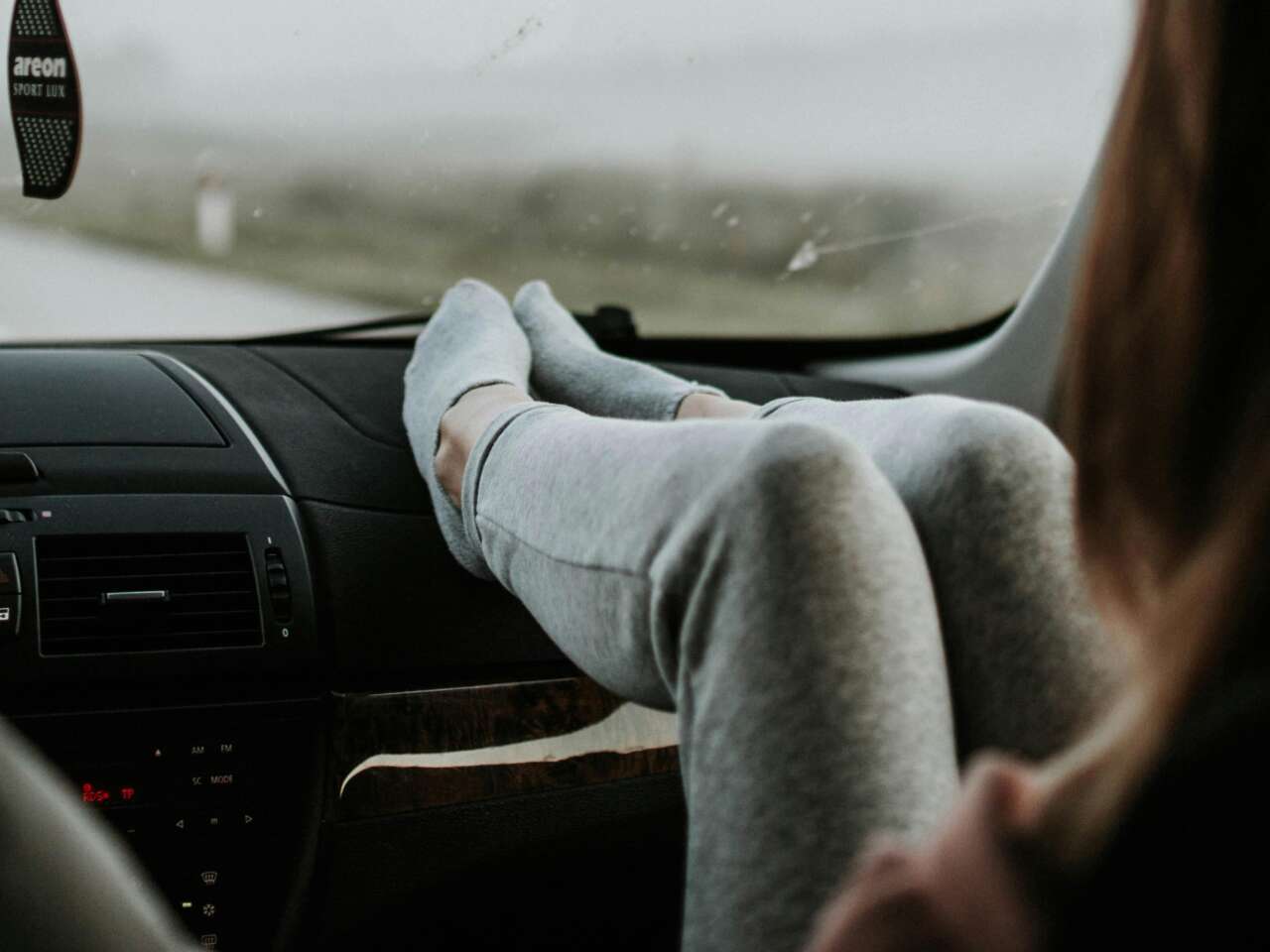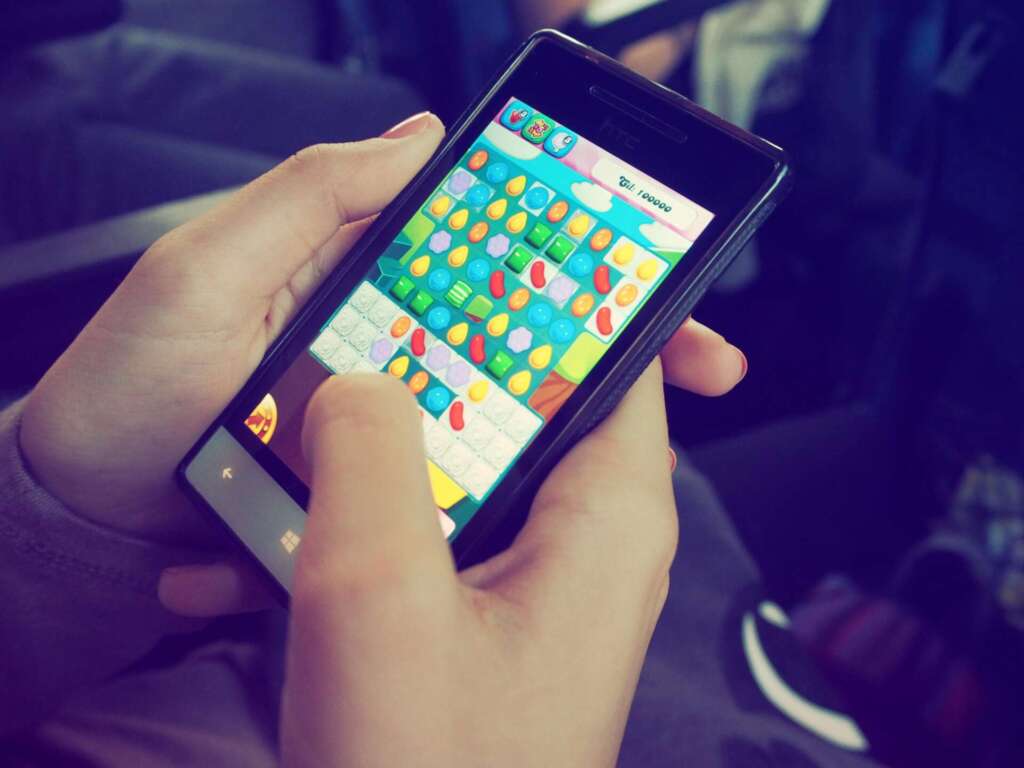Hey there! Have you ever felt really sick to your stomach while riding in a car, boat, or even when playing certain games on your phone? If you have, you might have experienced something called motion sickness.
Don’t worry, you’re not alone—many people, adults and kids alike, experience motion sickness. In this blog, we’re going to explore why people develop motion sickness, what can make it worse, and, most importantly, how to treat motion sickness if it happens to you.
Why Do People Get Motion Sickness?
Let’s start with the basics. Your body has a fantastic system that helps you keep your balance. This system includes your inner ear, eyes, and even some muscle and joint sensors. They all work together to tell your brain where you are and how you’re moving.
Motion sickness occurs when these parts of your body send mixed signals to your brain – because they can’t tell if what you’re experiencing is real or perceived motion. For example, if you’re reading a book in a moving vehicle, your inner ears sense that you’re moving, but your eyes are focused on the stationary book. Your brain gets confused because it receives two messages: “We’re moving!” and “We’re still!” This neural mismatch is what makes you feel a little ill and creates havoc.
Motion Sickness Symptoms
Motion sickness symptoms are never pleasant. The most common symptoms include:
- Nausea: Feeling queasy or the urge to vomit.
- Vomiting: Throwing up.
- Dizziness: Feeling lightheaded or unsteady.
- Sweating: Breaking out in a cold sweat.
- Pallor: Pale skin or change to a sickly colour.
- Headache: Experiencing pain or discomfort in the head.
- Fatigue: Feeling unusually tired or weak.
- Yawning: Frequent yawning, even if you’re not sleepy.
- Increased Salivation: Producing more saliva than usual.
- Loss of Appetite: Not feeling like eating, even if you’re usually hungry.
- Feeling Hot or Cold: Sudden changes in body temperature, feeling either too hot or too cold.
- Disorientation: Feeling confused or having trouble focusing.
Motion sickness symptoms can vary in intensity from mild discomfort to more severe symptoms, depending on the person and the situation. Recognizing these symptoms early can help you take steps to manage motion sickness before it gets worse.
Car Motion Sickness

Now that we’ve covered the symptoms of motion sickness, let’s look at some of the most common types. Car sickness is super common – especially in kids; they’re highly susceptible. It happens for the same reasons as other types of motion sickness—your inner ear and eyes send conflicting messages to your brain. Here are a few tips for treating motion sickness in a car:
- Sit in the Front Seat: Sitting in the front passenger seat can help because you can look out the window and see the horizon, which helps your brain understand that you’re moving.
- Look at the Horizon: Keeping your eyes on a fixed point like the horizon can help your brain sync up the signals.
- Avoid Reading: Reading in the car can make it worse because your eyes are focused on something that isn’t moving.
Car Motion Sickness in Kids
It makes sense that kids get car sick more often. Their brains are still growing and learning to deal with all this sensory information. If your child experiences car sickness, here are some extra tips to make the journey a little easier:
- Keep them distracted: Listen to music or audiobooks to keep their mind off the motion.
- Take Breaks: Stop the car and take a short walk to help reset their balance system.
- Healthy Snacks: Eating light, nutritious snacks can help settle their stomach.
Sea Motion Sickness
Have you ever been on a boat and felt like you would lose your lunch? That’s sea sickness. It happens for the same reason as car sickness—your body gets confused by the boat’s motion. Here are a few tricks to handle seasickness:
- Stay on Deck: Stay outside on the upper deck and look at the horizon. Fresh air and a stable view can really help.
- Choose the Right Spot: It can be better to sit in the middle of the boat, where there’s less motion.
iPhone Motion Sickness

Did you know you can get motion sickness by looking at your phone? It’s true! Some people feel sick when using iPhones or other devices because of how the screen moves. This is called “cybersickness.”
When you play certain games or use apps with lots of motion, like swiping or fast animations, your eyes see rapid movement but your body isn’t actually moving. Just like in a car, your brain gets mixed signals, which can lead to that yucky feeling. If this happens, try to take breaks often and reduce screen motion in your device settings.
Motion Sickness Treatment
Doctor Ann’s top tips
1] We need to make sure it’s motion sickness and not an alternative diagnosis like an ear infection
2] Try natural methods first e.g. ginger/changing your seating position
3] speak to a doctor if that doesn’t help as we have some prescription-only medication we can try
If you do start feeling motion sick, don’t worry—there are ways to feel better:
- Fresh Air: Getting some fresh air can help. Open a window or go outside if you’re on a boat.
- Ginger: Ginger is a natural remedy that can help relieve nausea. You can try ginger candies, ginger ale, or ginger tea.
- Stay Hydrated: Drink plenty of water. Dehydration can make you feel worse.
- Medications: Some options can be purchased with a prescription, and others are available over the counter at most pharmacies.
Motion Sickness Medicines
Several medications can help with motion sickness. Two main categories are hyoscine hydrobromide and non-drowsy options.
Hyoscine Hydrobromide
Hyoscine hydrobromide (also known as scopolamine) is a well-known motion sickness medication. It blocks certain brain signals that cause nausea and vomiting. It targets the muscarinic receptors involved in the vomiting reflex and prevents the brain from receiving confused signals from the inner ear.
Forms of Hyoscine Hydrobromide – make sure it is safe for you to use first
Commonly:
- Tablets: Taken orally 30-60 minutes before travel.
- Patches: Transdermal patches are applied behind the ear several hours before travel. The patch releases the medication over time for long-lasting relief.
Pros
- Effective: Proven to work well to prevent motion sickness.
- Long Lasting: Especially in patch form, up to 72 hours.
Cons
- Side Effects: Dry mouth, drowsiness, blurred vision, and dizziness sometimes.
- Prescription Required: Often requires a prescription from a doctor for the patch form.
Non-Drowsy Options
If you want options that won’t make you sleepy, here are a couple:
Meclizine (Less Drowsy Dramamine) and Cyclizine (Marezine) – Check safety before use
- How it Works: These are antihistamines that reduce the activity of the inner ear and prevent nausea and vomiting.
- Advantages:
- Less sedative effect compared to older antihistamines.
- Effective for both motion sickness and vertigo.
- Disadvantages:
- May cause dry mouth.
Ginger Supplements

- How It Works: Ginger has natural anti-nausea properties.
- Advantages:
- Non-drowsy and natural.
- Available in various forms like tablets, capsules, candies, and teas.
- Disadvantages:
- Effectiveness can vary from person to person.
- Some people may experience heartburn or digestive discomfort.
Choosing the Right Medication
When deciding on the best medication for motion sickness, consider the following factors:
- Severity of Symptoms: For severe symptoms, hyoscine hydrobromide might be more effective.
- Duration of Travel: For longer trips, hyoscine hydrobromide patches provide extended relief.
- Need for Alertness: If you need to stay alert, opt for non-drowsy options like meclizine, cyclizine, or ginger.
- Personal Preference and Sensitivity: Some people may be more sensitive to certain medications, so it might take trial and error to find what works best for you.
Remember to consult your doctor if you’re unsure about taking a new medication, as well as your personal health history.
Motion Sickness Glasses
Special glasses have been designed to help with motion sickness. These glasses have liquid-filled rings around the eyes. The liquid moves around and helps your brain understand the motion, reducing the mixed signals that cause motion sickness. They might look a bit funny, but they can be really helpful!
What Do Motion Sickness Glasses Do?
Motion sickness glasses may seem weird initially, but they are based on a pretty brilliant idea. To understand how these glasses work, let’s quickly go back to why motion sickness happens. Your body has a few ways to sense movement:
- Eyes: Your eyes see where you are and what’s moving around you.
- Inner Ear: Inside your ears are tiny structures filled with fluid that move when you do to help you balance.
- Proprioception: This is your body’s ability to sense its position and movement, through sensors in your muscles and joints.
When these systems send conflicting signals to your brain, like when you’re reading a book in a moving car (eyes say “still” but inner ears say “moving”), your brain gets confused. This confusion is what makes you feel dizzy and nauseous.
How Motion Sickness Glasses Help
Motion sickness glasses, also known as anti-motion sickness glasses, are designed to help your brain get its signals straight. They do this by providing a consistent visual reference for your brain to understand the motion you’re in. Here’s how they work:
- Liquid-Filled Rings: The glasses have four circular rims, two in front of your eyes and two on the sides. These rims are partially filled with a blue liquid that moves with the vehicle’s or environment’s motion around you.
- Simulated Horizon: The moving liquid creates a visual reference that simulates the horizon. Whatever direction you move, the liquid adjusts to match the actual motion. This helps your eyes see the same movement as your inner ears.
- Synchronization: By providing a visual cue that matches the motion of your body, the glasses help synchronize the signals to your brain. This reduces the sensory mismatch that causes motion sickness.
Why Motion Sickness Glasses Work
The secret to motion sickness glasses is reducing the conflict between what your eyes see and what your inner ear feels. Here’s why:
- Consistent Visual Input: The liquid in the glasses moves smoothly and consistently, a stable reference for your brain to understand motion.
- Reduced Sensory Conflict: With the visual reference from the glasses matching the motion your inner ears sense, your brain gets a clearer message, less confusion and less sick.
How to Use Motion Sickness Glasses
Using motion sickness glasses is easy:
- Wear Them at the Start: Put them on as soon as you board the vehicle. This helps your brain get the consistent signals from the beginning.
- Use Them for 10-15 Minutes: You don’t have to wear them the whole trip. 10-15 minutes should be enough to sync your senses and prevent motion sickness.
- Remove When Feeling Better: Once you feel better, you can take them off and enjoy the rest of the trip without the glasses.
More Tips
- Try Before You Travel: If you’re going on a long trip, try the glasses out before you travel.
- Use with Other Methods: Motion sickness glasses work better with other methods like looking at the horizon, getting fresh air and staying hydrated.
Alternative Therapies / Homeopathic Remedies
Acupressure bracelets, also known as sea bands or motion sickness bands, are a non-drug alternative to help alleviate symptoms of motion sickness. These bracelets work by applying gentle pressure to a specific acupressure point on the inner wrist, known as the P6 (or Nei-Kuan) point.
According to traditional Chinese medicine, stimulating this point can help reduce nausea and vomiting. The bands are worn on both wrists and use a small plastic stud to apply continuous pressure to this acupressure point, which many users find effective in reducing or preventing motion sickness without the side effects often associated with medication.
These bracelets are especially popular because they are easy to use, affordable, and suitable for both adults and children. They are ideal for those who prefer natural remedies or need to avoid drowsiness, such as travellers want to stay alert. While scientific evidence on their effectiveness varies, many people find some relief from motion sickness symptoms when using acupressure bracelets.
They are a great option to consider for anyone looking for a simple and side-effect-free solution to motion sickness. They are generally risk free so worth a try
An example: Lily’s Family Road Trip

Eliot and Mary have a 7 year old daughter Lily who experiences motion sickness. Every time they travel by car Lily gets nauseous, dizzy and vomits making family trips a challenge. With a big family trip coming up Eliot and Mary want to find a solution that doesn’t involve meds as they are concerned about drowsiness and side effects.
Initial Consultation
Eliot and Mary take Lily to her doctor. Her doctor listens to their concerns and assesses Lily’s symptoms. Since they want to avoid drowsy meds, the doctor suggests several non-pharmaceutical ways to help Lily enjoy the upcoming trip.
Non-Medicinal Techniques for Improving Motion Sickness
Doctor gives Eliot and Mary a full plan to manage Lily’s motion sickness:
- Seating Position: Dr. recommends Lily sit in the middle of the back seat, as opposed to next to a window seat. This way, she can look straight ahead and see the road clearly. This minimizes the disconnect between what she sees and feels and reduces motion sickness symptoms.
- Ventilation: Good ventilation in the car is key. Dr. says to keep the windows slightly open to let air in, which can help with nausea.
- Distractions: Engage Lily in conversation, play her favourite music or give her audiobooks. Dr. warns against reading books or playing games on electronic devices as these can worsen motion sickness.
- Frequent Breaks: Dr. suggests planning frequent stops during the trip. To reduce her symptoms, let Lily get out of the car, stretch, and walk around.
- Light Snacks: To prevent nausea, keep Lily’s stomach partially full with light, bland snacks like plain crackers or pretzels. Dr. advises against heavy meals or greasy foods before and during the trip.
- Ginger: Dr. says ginger has natural anti-nausea properties. He recommends giving Lily ginger candies or ginger ale (in moderation) before and during the trip.
- Acupressure Bands: Dr. suggests trying acupressure wristbands designed to prevent motion sickness.
Follow-up and Results
Eliot and Mary follow Dr’s advice and prepare for the family trip with the non-medicinal aids. During the trip, they notice a significant improvement in Lily’s condition. She’s not nauseous and can enjoy the journey without discomfort.
Lily’s case shows that motion sickness in kids can be managed without medications. Eliot and Mary consulted a pediatrician and implemented practical solutions to let their daughter enjoy family trips without the side effects of medications.
Conclusion
Motion sickness can be a real pain, but understanding why and how to handle it can make a big difference. Plenty of strategies and tools help you prevent motion sickness, including medicine if you need it. With these tips, you’ll be ready to tackle any trip without feeling sick. Safe travels!
For a quick guide to motion sickness, view my video below:
Disclaimer
The contents of this website, including the video above, is for educational purposes and not intended to be a substitute for professional medical advice, diagnosis, or treatment. Always get advice from your doctor if you are worried or have symptoms.
References
- National Health Service (NHS). “Hyoscine hydrobromide (Kwells and Joy-Rides)”. Available here.
- National Health Service 111 Whales. “Travelling with children”. Available here.
- Centers for Disease Control and Prevention (CDC). “Motion Sickness”. Available here.
- Mayo Clinic. “Motion Sickness: First Aid”. Available here.
